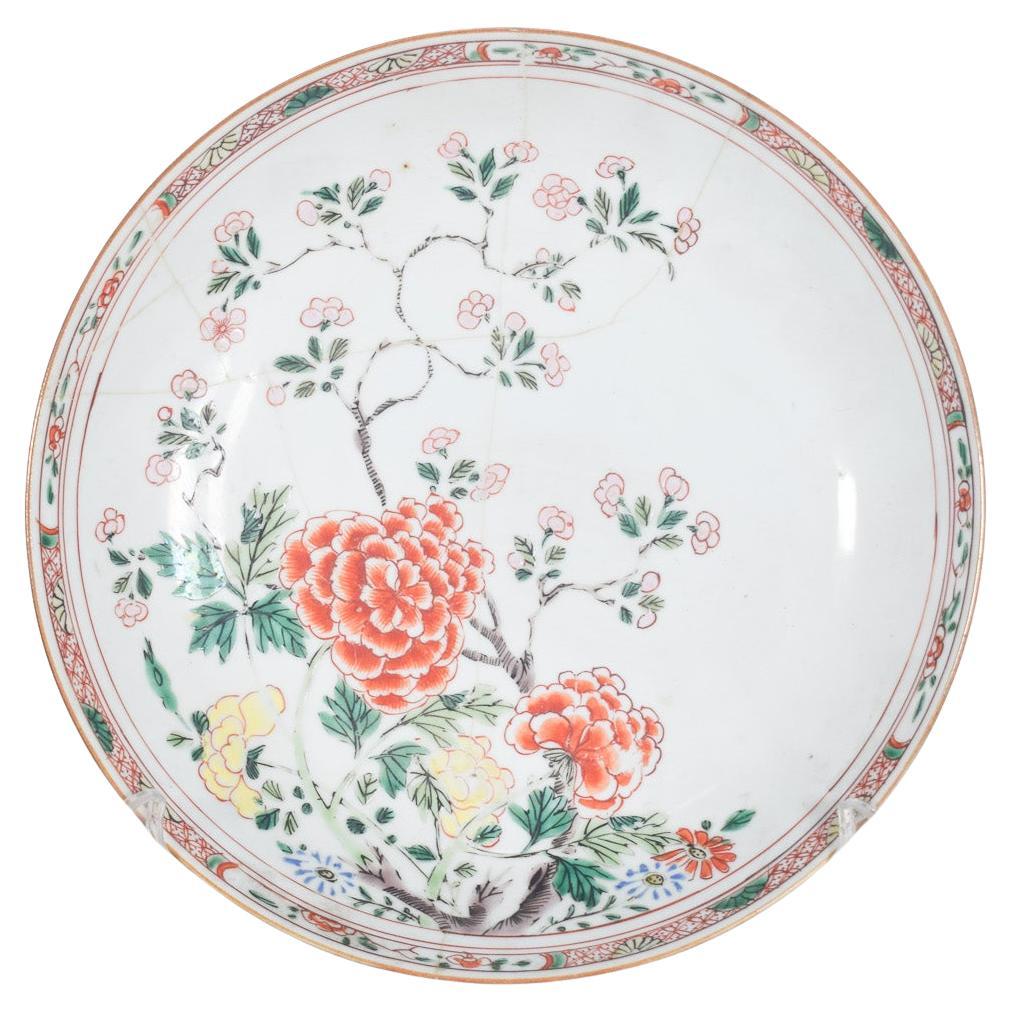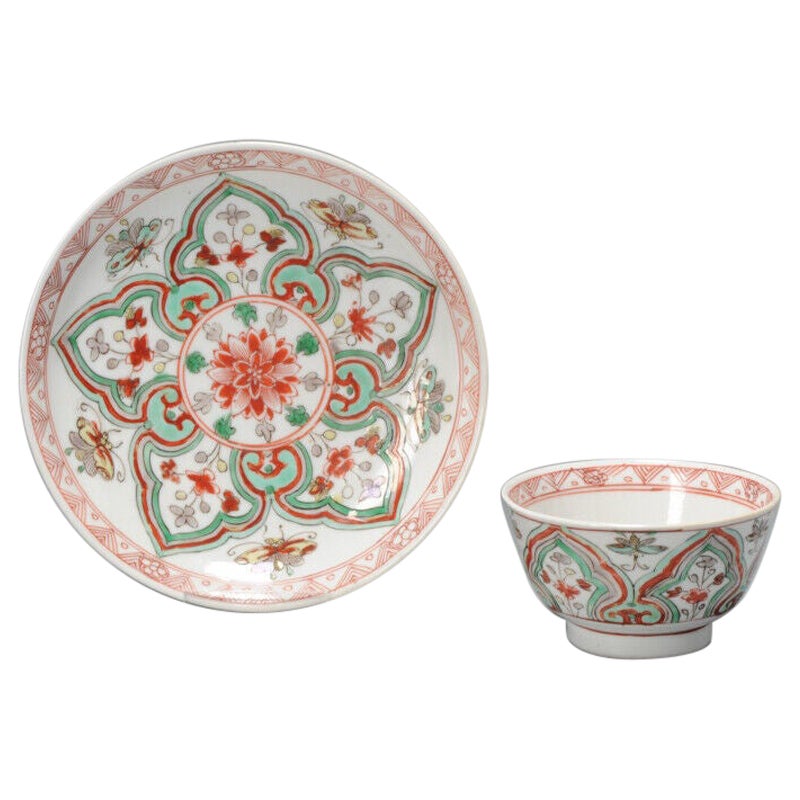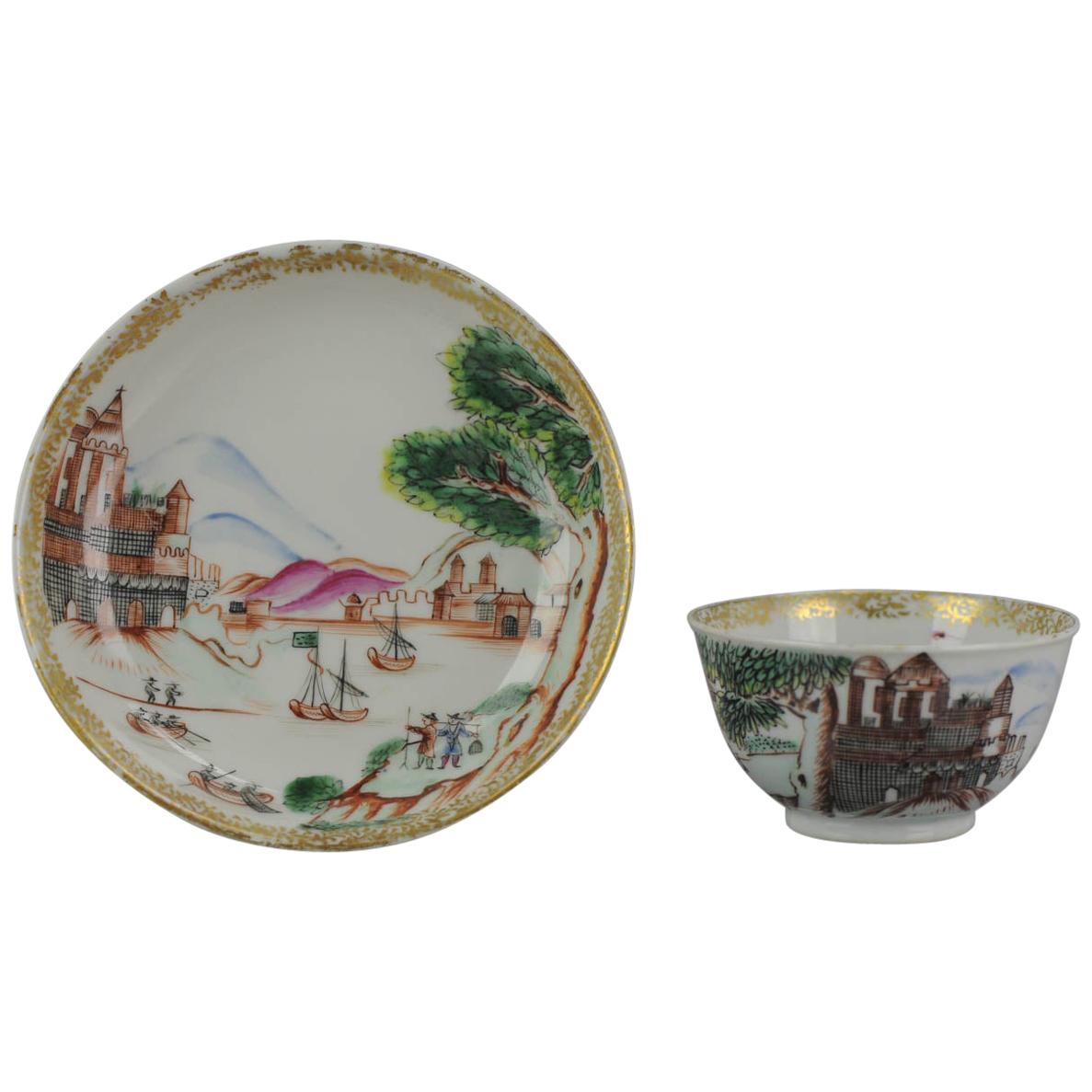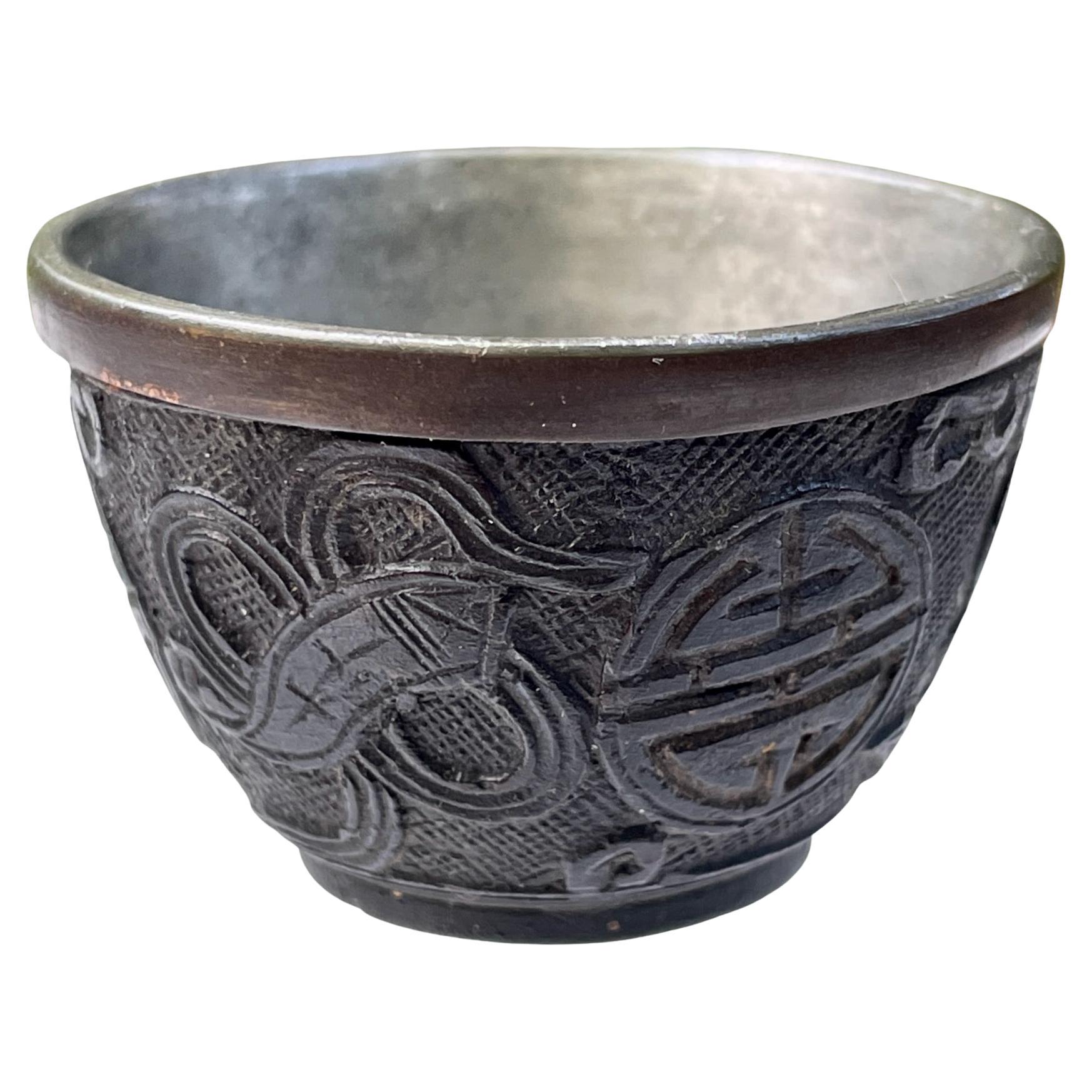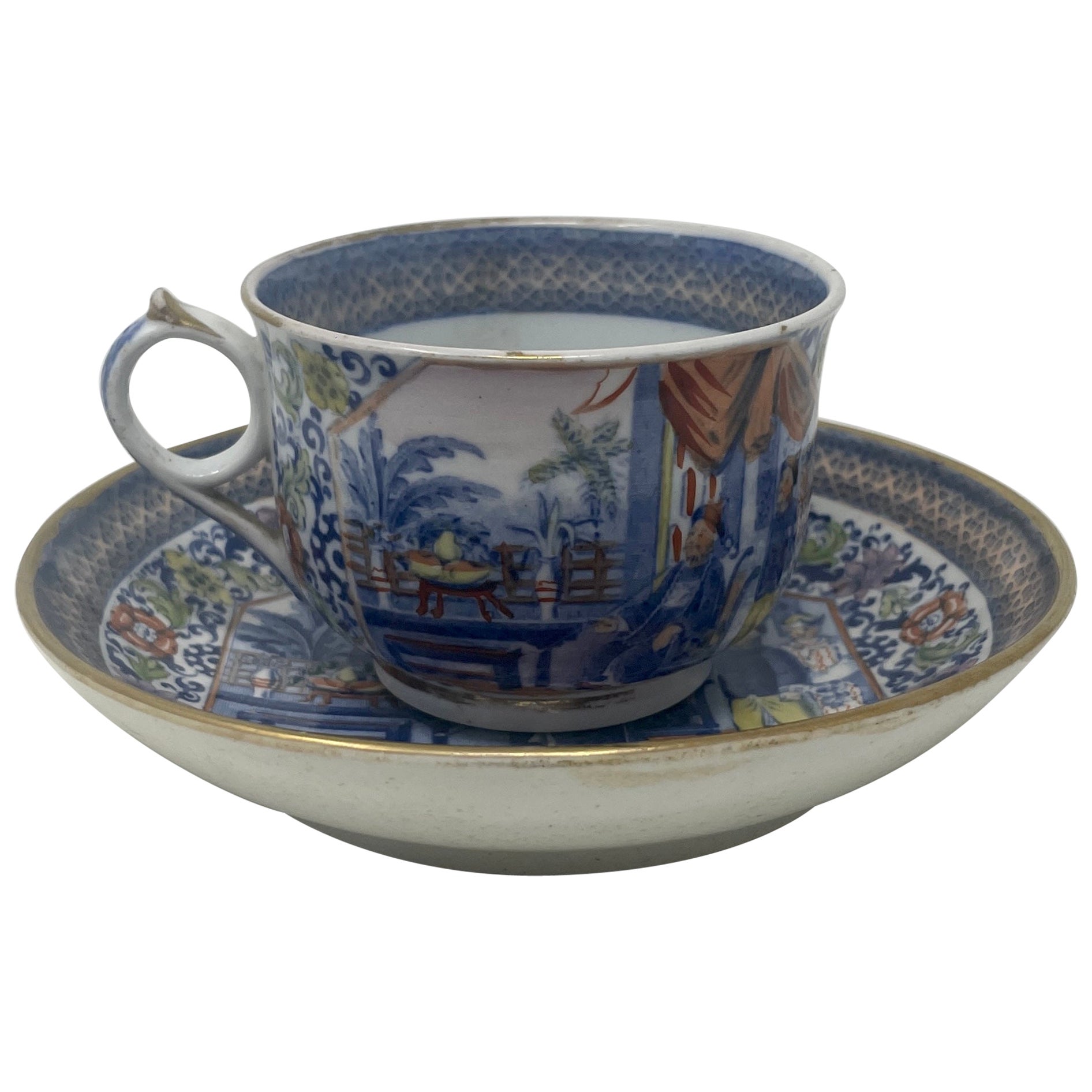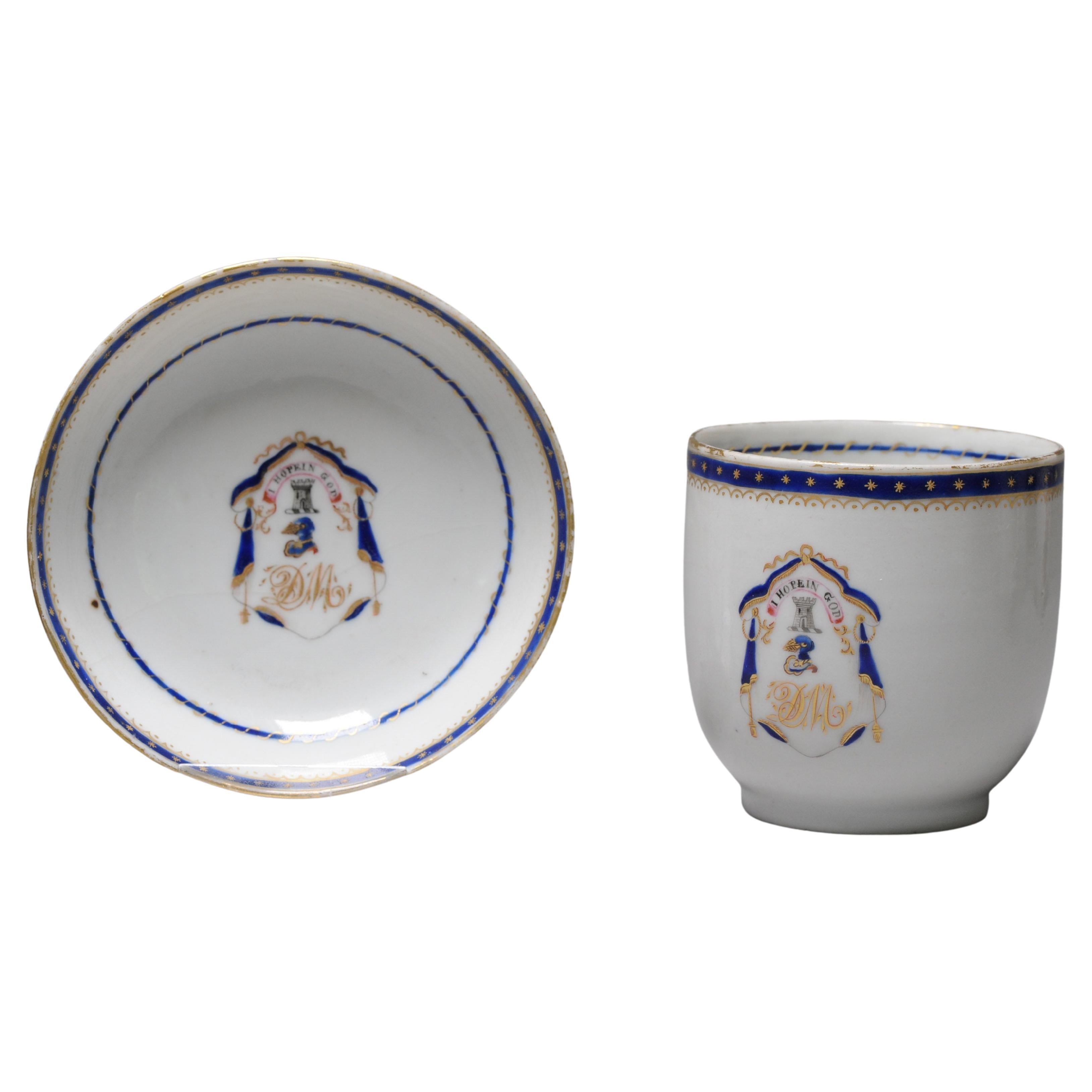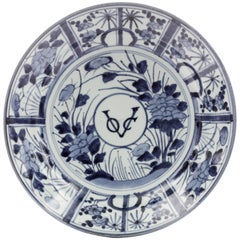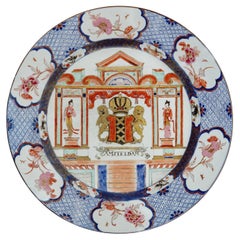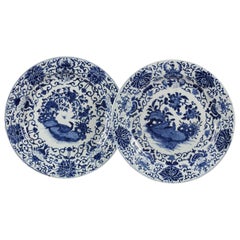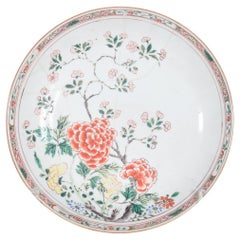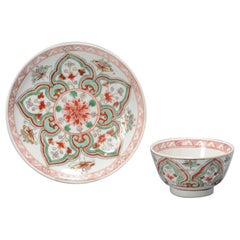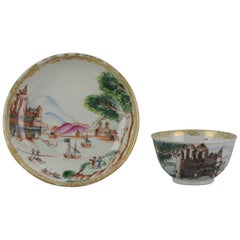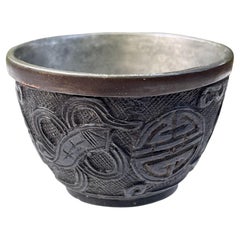Items Similar to Rare Chinese Tonkin Ware Cup-and-Saucer, Early 18th Century
Want more images or videos?
Request additional images or videos from the seller
1 of 2
Rare Chinese Tonkin Ware Cup-and-Saucer, Early 18th Century
$29,536.31per set
£22,139.30per set
€25,000per set
CA$40,577.88per set
A$45,301.38per set
CHF 23,737.24per set
MX$554,533.38per set
NOK 301,463.22per set
SEK 284,241.54per set
DKK 190,309.12per set
Quantity
Shipping
Retrieving quote...The 1stDibs Promise:
Authenticity Guarantee,
Money-Back Guarantee,
24-Hour Cancellation
About the Item
A Chinese made tonkin ware gilt- and lacquer cup and saucer
China or Japan, Chinese artisans, early 18th century
The black-lacquered cup with gilt handles in the shape of sculptured chrysanthemums and a lobbed edge decorated with gilt engraved border, with a gilt foot-ring that fits into the saucer ring, with two cartouches showing partly undercut gilt relief trees and birds on a gilt granulated background, black lacquered bracket-lobed edge, depicting gilt engraved peony scrolls and three cartouches decorated with high relief gilt trees and birds on a gilt granulated background, the centre with engraved chrysanthemum, enclosed by a raised ring upon which the cup fits, around which a circular panel decorated with high gilt relief trees, flowers, birds and a butterfly on a gilt granulated background.
Measures: Cup: H. 5.7 x W. 8.5 cm
Saucer: Diameter 13 cm
Provenance:
Collection Felix Schäfer
Note:
The decoration of the cup and saucer is identical to the slightly smaller cup and saucer in the collection of the Rijksmuseum Amsterdam (inv. No. NG-1994-37-1/E). In a still life painting by Pieter Gerritszoon van Roestraten (1627-1700), three pairs of similar Sawasa cups and saucers are depicted (Sawasa, Japanese export art in black and gold, 1650-1800, Rijksmuseum 1998, fig. 12).
- Dimensions:Height: 2.25 in (5.7 cm)Diameter: 5.12 in (13 cm)
- Sold As:Set of 2
- Style:Chinese Export (Of the Period)
- Materials and Techniques:
- Place of Origin:
- Period:
- Date of Manufacture:1700-1715
- Condition:Wear consistent with age and use.
- Seller Location:Amsterdam, NL
- Reference Number:1stDibs: LU5458220878632
About the Seller
5.0
Recognized Seller
These prestigious sellers are industry leaders and represent the highest echelon for item quality and design.
Established in 1985
1stDibs seller since 2020
23 sales on 1stDibs
Typical response time: 2 hours
- ShippingRetrieving quote...Shipping from: Amsterdam, Netherlands
- Return Policy
Authenticity Guarantee
In the unlikely event there’s an issue with an item’s authenticity, contact us within 1 year for a full refund. DetailsMoney-Back Guarantee
If your item is not as described, is damaged in transit, or does not arrive, contact us within 7 days for a full refund. Details24-Hour Cancellation
You have a 24-hour grace period in which to reconsider your purchase, with no questions asked.Vetted Professional Sellers
Our world-class sellers must adhere to strict standards for service and quality, maintaining the integrity of our listings.Price-Match Guarantee
If you find that a seller listed the same item for a lower price elsewhere, we’ll match it.Trusted Global Delivery
Our best-in-class carrier network provides specialized shipping options worldwide, including custom delivery.More From This Seller
View AllLarge 17th Century Colonial Japanese Porcelain VOC Charger
Located in Amsterdam, NL
A Japanese Arita blue and white porcelain VOC dish.
Arita, late 17th century
Measure: Diameter 32.1 cm
These dishes, ordered by the VOC during the second half of the 17th century, were copied after the popular Chinese Wanli ‘Kraak’ porcelain...
Category
Antique Late 17th Century Japanese Ceramics
Materials
Porcelain
An extremely rare Chinese export famille rose armorial porcelain charger
Located in Amsterdam, NL
An extremely rare and large Chinese export famille rose armorial porcelain charger with the Amsterdam coat-of-arms
Qianlong period, circa 1720-1...
Category
Antique Early 18th Century Chinese Chinese Export Ceramics
Materials
Enamel
Two Chinese Porcelain Kangxi 'Pelgrom' Armorial Chargers, circa 1710
Located in Amsterdam, NL
A pair of very large Chinese armorial export blue and white porcelain 'Pelgrom' chargers
Kangxi period, circa 1710
The two chargers, decorated in...
Category
Antique Early 18th Century Chinese Chinese Export Ceramics
Materials
Porcelain
A superb Chinese export famille rose porcelain VOC teapot and pattipan saucer
Located in Amsterdam, NL
China, circa 1730
Porcelain decorated in rose-pink, yellow and soft blue- green enamels, on a shield a lion rampant crowned, holding in his left paw a bunch of seven arrows symbolis...
Category
Antique 1730s Chinese Chinese Export Ceramics
Materials
Enamel
Fine 17th Century Japanese Export Black and Gold Lacquered Pictorial-Style Dish
Located in Amsterdam, NL
A fine Japanese export black and gold lacquered pictorial-style dish Nagasaki or Kyoto, 1680-1720
The dish with wide flat rim of Keaki wood (Zelkova species) in black lacquer with...
Category
Antique 17th Century Japanese Edo Lacquer
Materials
Gold
Rare Chinese Export Porcelain Voc Dish
Located in Amsterdam, NL
A Chinese export porcelain VOC (Dutch East India Company) dish
Canton, Yongzheng period, circa 1730
Diam. 23 cm
Executed in rose-pink, ...
Category
Antique 18th Century Chinese Chinese Export Ceramics
Materials
Porcelain
You May Also Like
Saucer in Chinese Porcelain for Export, Qing Dynasty
Located in Lisboa, Lisboa
Saucer, in Chinese porcelain for export. Qing Dynasty, Qianlong period (1736-1795). Polychrome and gilded decoration, with flowers.
Decorated with a floral composition, where red and...
Category
Antique Mid-18th Century Chinese Baroque Porcelain
Materials
Porcelain
Antique Famille Verte Kangxi Period Tea Bowl SE Asia Chinese Porcelain
Located in Amsterdam, Noord Holland
Very rare Kangxi Famille Verte Tea Set with Ruyi decoration for the SE Asian market.
Marked with a Lozenge with ribbons. Large dish with similar ruyi design is pictured in; Ströber,...
Category
Antique 17th Century Chinese Tea Sets
Materials
Porcelain
$2,833 Sale Price
20% Off
18C Antique Rare Cup Saucer Chine de commande, Western Subjects Meissen Style
Located in Amsterdam, Noord Holland
China
1750-1775
Measures: Height of teacup 43 mm (1.69 inch), diameter of rim 76 mm (2.99 inch), diameter of footring 34 mm (1.33 inch).
Height of saucer 23 mm (0.91 inch), diameter of rim 120 mm (4.72 inch), diameter of footring 72 mm (2.83 inch)
Teacup and saucer on footrings with spreading sides and rims. Decorated in various overglaze enamels, and gold after the style of Meissen porcelain with a European harbour with a large fortress, mountains houses, boats with fisherman and trees. On the quay two men hunting for ducks. On the sides and rim a decorative pattern of scrollwork. The reverse is undecorated. The teacup is decorated en suite.
Chine de commande...
Category
Antique Mid-18th Century Chinese Qing Ceramics
Materials
Porcelain
$1,275 Sale Price / set
20% Off
Rare Antique Chinese Qing Carved Coconut Bowl Tea Cup
Located in Hyattsville, MD
Chinese coconut carved shell pewter tea cup, likely from the Qing Dynasty. These cups were considered rare and valuable, with the Chinese believing tha...
Category
Antique 19th Century Chinese Chinese Export Tableware
Materials
Coconut
Antique Chinese Cup & Saucer, circa 1840
Located in New Orleans, LA
Antique Chinese cup & saucer, circa 1840.
Category
Antique Mid-19th Century Chinese Tea Sets
Materials
Porcelain
Antique Chinese Armorial Tea Bowl Porcelain Qianlong China ca 1775
Located in Amsterdam, Noord Holland
Scottish McNaughton family / Clan Armorial Crest. The text: "I Hope in God" underneath a tower and helmet.
Condition
cup perfect, saucer star hairline and line from rim. Size 96...
Category
Antique 18th Century Chinese Qing Ceramics
Materials
Porcelain
$706 Sale Price
20% Off
More Ways To Browse
Rare China
Rare Antique China
Used Cups And Saucers
Measuring Cup
Measuring Cups
Chinese Cups
Cup 18th Century
Antique Measuring Cups
Gold Cups And Saucers
Chinese Saucer
Antique Chinese Cup
18th Century Chinese Painting
Chinese Bird And Flowers Painting
Antique Ring Tree
Antique Chinese Painting Of Birds
Saucers Japan
Chinese Lacquer Tree
18th Century Cup And Saucer
